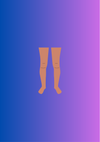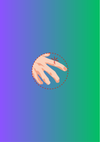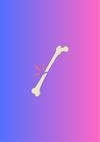
2 Types of Trainees, Facial Nerve Anatomy, Reanimation Tips
Also: Facial nerve palsy quiz, evidence on reanimation, & 3 recommended reads.

Also: Facial nerve palsy quiz, evidence on reanimation, & 3 recommended reads.

Also: ABCDEs of melanoma detection, Glabellar flap, & the Sunday quiz.

Also: Fresh quiz round, Wise-pattern pearls, upcoming breast surgery events.

Apert syndrome is a rare genetic disorder causing craniosynostosis, midface hypoplasia, and severe syndactyly. The Upton classification guides surgical correction of the hands, aiming to improve function by separating webspaces and lengthening the thumb. Surgical staging begins around 4 months.

Also: Upcoming craniofacial & cleft conferences, levator repair guide, & 3 recommended reads.

Also: Gastroc flap tips, lower limb trauma events, & final round of the Sunday quiz.

Also: BAPRAS Congress 2025, New journal club, & the Sunday quiz.

A lower-limb exam follows the sequence look, feel, move, and neurovascular. Inspect for deformity or wounds, palpate for tenderness and compartment tension, assess joint motion, strength, sensation, and pulses. Reassess after intervention; early pain on stretch warns of compartment syndrome.

An angiosome is a 3D block of tissue supplied by a single artery-vein pair. Understanding these vascular territories and their choke-vessel connections allows surgeons to design flaps with reliable perfusion, apply delay techniques, and plan reconstructions with reduced necrosis and morbidity.

Paronychia affects the nail folds and is often bacterial, while a felon is a deep abscess in the fingertip pulp, causing intense pain. Both require early recognition and drainage to prevent complications like osteomyelitis, septic arthritis, or fingertip sensory loss.

The thigh has three compartments (anterior, medial, posterior) and the leg has four (anterior, lateral, superficial posterior, deep posterior), each containing muscles, nerves, and vessels. Rigid fascia limits expansion, making the anterior leg most prone to compartment syndrome.

Fractures are three-dimensional injuries best described using the PLACES framework: Pattern, Location, Alignment, Closed/open status, Examination findings, and Special investigations. At least two orthogonal X-rays are required to assess fracture type, displacement, joint involvement, and severity.

Also: Video guide for finger replants, the Sunday quiz, & P'fella at BAPRAS Congress 2025!

The upper limb is divided by fascia into compartments with specific muscles, nerves, and vessels. The arm has anterior (flexor) and posterior (extensor) groups & the forearm has volar, dorsal, and lateral compartments. Rising pressure causes compartment syndrome requiring urgent fasciotomy.

Also: Huger's abdomen vascular zones, fleur-de-lis abdominoplasty markings, & Foundations sales reopen soon!

This is your chance to become a handful of people that can shape the future of plastic surgery education. We're levelling up to a faster platform, smarter tools, and a bold new vision. We want to do it with our community: transparent and collaborative.

Also: Suture sizes summarised, the Sunday quiz, & arterial anastomosis guide.

Suturing choice depends on wound type. Simple interrupted sutures give strength and versatility, mattress sutures evert edges and spread tension, and deep dermal ones relieve surface stress. Subcuticular sutures improve appearance, while vertical mattress and secure knots prevent dehiscence.

Transposition flaps are essential in reconstructive surgery. An ideal option for redirecting tissue into adjacent defects, with superior cosmetic outcomes compared to simple rotation or advancement flaps.

Surgical instruments improve efficiency and minimize trauma. Scalpels suit different incisions, forceps may be toothed or atraumatic, retractors provide exposure, scissors vary by tissue, & electrosurgery offers cutting & coagulation. Proper selection, handling, & set preparation enhance outcomes.

A summary of the classification of sutures, common materials used in plastic surgery, the USP sizing system, needle designs, and practical guidelines for choosing and removing sutures.

Local flaps move adjacent, vascularized tissue. Classified by perfusion (random/axial/perforator), composition (cutaneous→osseomyocutaneous), and movement (advancement/rotation/transposition/interpolation). Selection hinges on defect, tension vectors, and aesthetic subunits.

The reconstructive ladder guides wound closure from simple to complex: secondary intention, primary closure, skin grafts, local flaps, pedicled flaps, & free tissue transfer. Choice is defect- and patient-specific, evidence-based, with “elevator” jumps when higher rungs optimize outcomes.

This article summarises observational and experimental study designs, RCTs, systematic reviews/meta-analyses, PROMs, qualitative methods, and bias-appraisal tools; highlights registries, collaborative networks, and priority-setting to boost evidence quality in plastic surgery.

